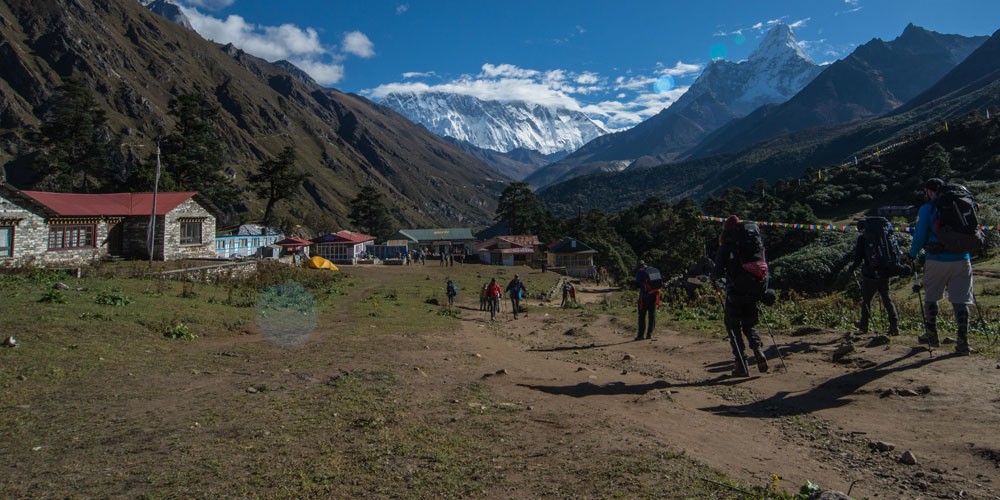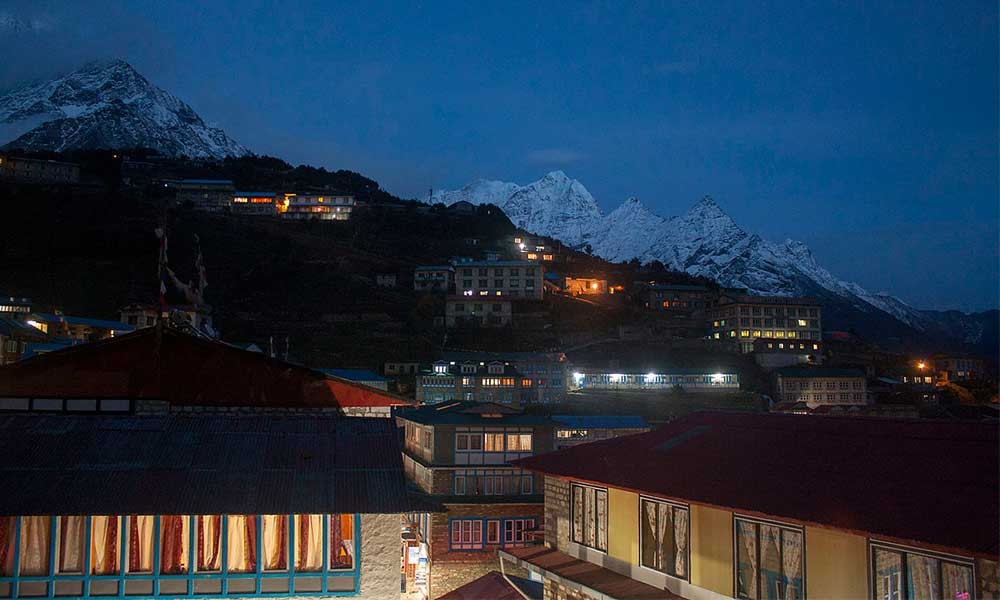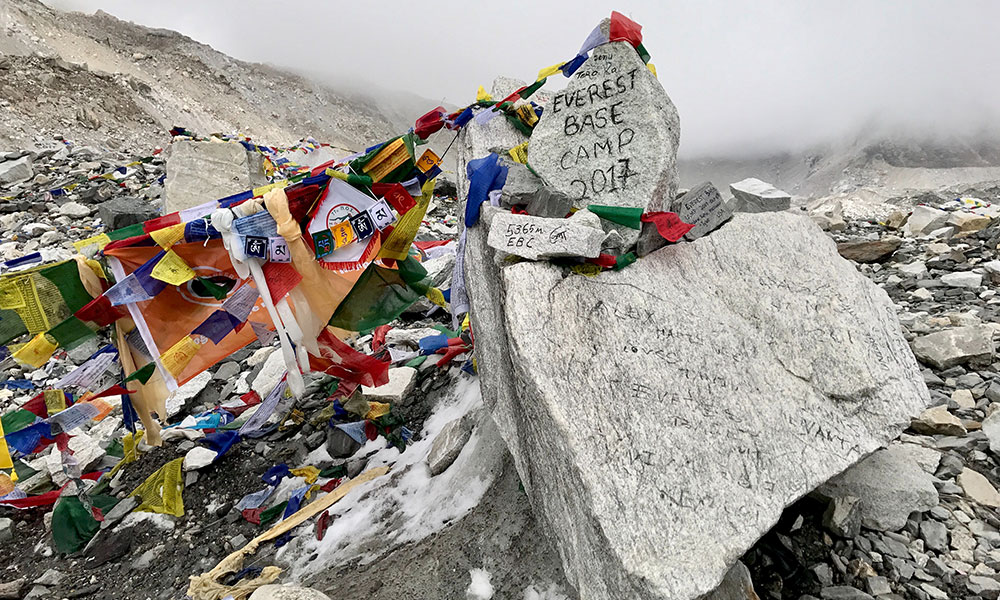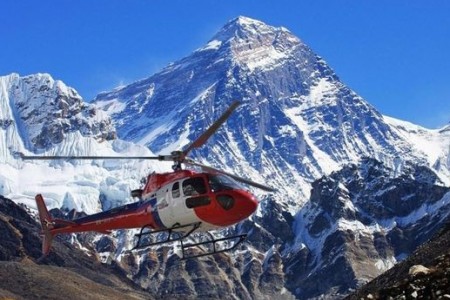Many trekkers worry about the Everest Base Camp altitude sickness. But before you jump to the sickness in Everest Base Camp trek, first you should know about the altitude sickness.
As the altitude increases, lower the oxygen level gets. As a result, the atmospheric pressure also decreases. While ascending to higher altitudes, anyone might have difficulty in breathing, feeling of loss of energy, and dizziness.
This means you are having signs of altitude sickness. Altitude sickness is a poor condition of the human body at higher elevations. It can be simple, mild or even fatal sometimes.
The symptoms of altitude sickness are generally noticed at altitudes above 2400 meters. At these altitudes, the oxygen content in the air reduces to around 60% than in sea level.
Anyone can get symptoms of altitude sickness. It sees no age or physical fitness. But you are more prone to get the symptoms if you try to walk too fast without proper rest.
Lack of knowledge of healthy trekking habit often causes altitude sickness. Do not push yourself into difficult ascents. Take your time. For higher altitude treks, patience is the key to a successful trek.

Altitude Sickness in Everest Base Camp trek
Everest Base Camp Trek is one of the highest altitude treks in the world. It is the most daring trekking adventures in Nepal. It isn’t easy to get so close to the giant Everest. The Himalayas aren’t just alluring, they can be equally dangerous and mysteriously challenging on getting closer.
The starting point of the trek, Lukla Airport sits at an altitude of 2,600m. The initial point on the trek itself is at a point of risk of altitude sickness. The highest point to where the trek takes you is Kala Patthar 5,500m.
This implies that the trek oscillates in between the ‘high altitude’ and ‘the very high altitude’. Thus, you are under the risk of altitude sickness throughout the Everest Base Camp trek.
The EBC trek demands lots of struggles and hard works. The trek is a bunch of enchanting memories. But all those aren’t happy. A lot of trekkers have their stories of bad health and sufferings too.
You might have to suffer a lot of health issues just because of the altitude. Altitude sickness sees no age or gender. Anyone is equally likely to suffer altitude sickness while on the trek. It is most common amongst the trekkers.
Altitude Sickness in Everest Base Camp trek isn’t something to take lightly. The sickness can be even fatal if the remedies are not taken in time.
By this, we aren’t meaning that the trek is too difficult or risky. The trek is absolutely lovely if you follow the precautions against altitude sickness. Always keep in mind, prevention is always better than the cure.
Stop immediately as you see the symptoms of altitude sickness. You must not overestimate your strength and push forward to trek. It has been found that most of the trekkers get severe attacks by ignoring the symptoms.
Altitude Sickness is one of the major challenges to the EBC trekkers. You might even have to return back or halt while trying to speed up the trek. Get an adequate break. Take your time to enjoy the spirituality of the Everest region.
Are you planning your Everest Base Camp Trek? Don't hesitate to contact us. Tell us your requirements, we can help you to make your trip memorable.
Acclimatization During the Everest Base Camp Trek
Acclimatization is a process by which your body adapts to the surroundings at high altitudes. This includes adapting to lower oxygen levels and lower air pressure.
It is a way of preventing the possibilities of altitude sickness. The first acclimatization point on the trek is at Namche, 3440 meters. You need a one day’s rest there. Play with the Himalayan weather while enjoying the beautiful place.
From Namche, the trek ascends to higher points day by day. That’s why you need to acclimatize there and prepare your body for higher places. Acclimatizing in Namche doesn’t mean you no more have risks of altitude sickness.
1000 meters above from Namche, Dingboche 4440 meters is the destination for the second acclimatization. To prevent altitude sickness, you must acclimate your body in every 1000 meters ascent.
Resting your body at higher altitude means you are allowing your lungs to adjust to thinner air by itself. This will encourage a less risk and an easier journey.
In preventing altitude sickness, proper acclimatization is the most important thing to do. Skipping your acclimatizing schedule means you are increasing the risks of altitude sickness.

Types of Altitude Sickness
Everyone has different altitude lines. This is dependent on various factors. Sometimes it can also be your genetic makeup. There are various kinds of altitude sickness. They are grouped on the basis of symptoms and their severeness.
There are basically three types of altitude sickness. They are AMS (Acute Motion Sickness), HAPE (High Altitude Pulmonary Edema), and HACE (High Altitude Cerebral Edema).
Some Tips to Prevent Everest Base Camp Altitude Sickness
Research on Altitude Sickness
Gather every possible information about the Everest Base Camp trek before going. Focus mainly on the possibilities, symptoms, preventive measures and remedies of altitude sickness.
Everest Base Camp trek isn’t a normal trek. The trek takes you to an altitude of 5500 meters (max). Trek in high altitudes is always difficult. Be ready to encounter newer risks and challenges as the trek progresses.
You are more likely to get altitude sickness while on the trek. Researching on the EBC trek, possibilities of the altitude sickness, and its prevention is thus, mandatory.
Getting altitude sickness is common amongst the trekkers. Even the experienced guides and trekkers can get the sickness if they lack proper preparations.
You can research about altitude sickness via various means. Consult your doctor, visit websites, blogs, and other sources for valuable information.
Choose the Right Traveling Agency
Choosing the right traveling agency means getting rid of half of your problems.
A good traveling agency provides you proper suggestions during the treks. Also, they will guide you as per their previous experiences. They will organize your trek properly.
They will schedule the most suitable acclimatization schedule for your EBC trek. They will clearly advise you about the do’s and dont’s during the trek.
While choosing a travel agency, don’t look for a cheaper rate but on the itinerary and acclimatization schedule.
During your EBC trek, you will need a professional guide by your side to keep you safe. The trek can be fatal if taken carelessly.
Walk in a Slow and Steady Pace
Walking at a slow and steady pace is one of the keys to a successful EBC trek. It helps you to prevent yourself from altitude sickness.
On the Everest Base Camp trek, the ascending paths are mostly steep and rocky. So, you must move gradually maintaining a uniform speed.
In most of the cases, trekkers who attempt speedy treks are the one who gets the altitude sickness symptoms. Hurrying up increases breathing rates. It makes your body restless.
As a result, you will suffer from shortness of breath. Also, you won’t have enough time and energy to cope with the changing atmosphere.
The low oxygen levels can cause your body to dehydrate sooner. This is when you start seeing the altitude sickness symptoms.
Hit High Altitudes During Daytime and Sleep at Lower Altitude
In general, the symptoms of altitude sickness are hardly seen during days. On the other hand, air gets thinner during days. Furthermore, the low temperature adds to it. So, you are more likely to see altitude sickness symptoms at nights.
So, it is better to trek to higher altitudes during days. Descend down to lower altitudes for night stays. It is not recommended to sleep at altitudes above 5000 meters during EBC treks.
Sleeping above such altitude means there is a risk of severe altitude sickness (HAPE and HACE). So it isn’t a right decision to stay at the Base camp, 5360m and Kalapathar, 5545m during your EBC trek.
Get Some Physical Fitness Training Before Trekking
Altitude sickness generally affects a person having weak physical and medical conditions. Regardless of age group, or gender, it can happen to anyone.
But being physically fit is a sign of a healthy body. This doesn’t prevent the sickness but can reduce its risks to some extent.

Keep Your Body Hydrated
While trekking in cold surroundings and high altitudes, your body dehydrates very fast. You will feel less thirsty, but deep inside your body tends towards dehydrating.
Thus, you might not be known but you are dehydrating. This can cause altitude sickness. So, you must drink water from time to time to stay hydrated.
Do not restrict drinking water, in order to avoid urinating too often. Doctors suggest drinking up to 5 liters of water every day during your EBC trek.
Hydrating helps you to cure the acute altitude sickness symptoms. Carry a refillable water bottle with you. Drink water in certain intervals, breaks, or during rests.
Are you planning your Everest Base Camp Trek? Don't hesitate to contact us. Tell us your requirements, we can help you to make your trip memorable.
Avoid Drinking Alcohols and Smoking During the Trek
Smoking or drinking alcoholic beverages during the Everest Base Camp trek is strictly prohibited. At high altitudes, air is thinner. There is less oxygen in the air.
Drinking alcohol pushes your body to dehydrate. Smoking causes shortness of breath. This means you can get symptoms of altitude sickness so easily. In some cases, drinking and smoking can worsen your health conditions.
Never smoke or drink alcoholic beverages while on high altitude treks.
Never Try to Hide the Symptoms of Altitude Sickness
Throughout the EBC trek, keep in mind that you are in the risk zone. Avoid ignoring minor symptoms of altitude sickness while overestimating your strength.
You must discontinue your trek and descend down to safer altitudes as soon as you see any symptoms. If you try to ignore the symptoms, that’s when the sickness gets you badly.
Inform your team/ partner/ guide when you see any signs of the sickness. It is necessary to take steps of preventive measures to resolve your sickness immediately.
Never push your limits. Do not lie or keep quiet.
Take Immediate Medications and Other Medical Precautions
Diamox is a medicine to prevent altitude sickness. It helps in speeding up the acclimatization process. Take the right dosages at the right time. Always take the medication under the prescription of your own doctor.
Take Energy Bars and Dark Chocolates
Everest Base Camp trek is physically demanding. To walk over the rough and diverse terrain, you must consume healthy meals. Despite three meals a day, you will also need short snacking breaks during hikes.
Pack some healthy snacks with you. Energy bars and chocolates are useful for instant energy boosts. Also, many trekkers believe that consuming dark chocolate helps against altitude sickness.
It is always good to carry some light snacks. You can have them while on the trek routes.

Conclusion
Everest Base Camp altitude sickness is a major challenge to the trekkers. You can not reduce the risk of altitude sickness to zero. But there are some ways by which you can prevent it to some extent.
Take seriously the altitude sickness during your high altitude treks. You can not undermine it during your Everest Base Camp trek. Follow the precautions properly.
You should never ignore the guidelines and overestimate your abilities when it comes to Everest Base Camp. Altitude sickness makes the trek difficult, but not impossible.
With proper planning, researches, advice, and precautions, the trek is absolutely doable. For more details on this trek contact us.
Best of luck for your adventurous journey!


